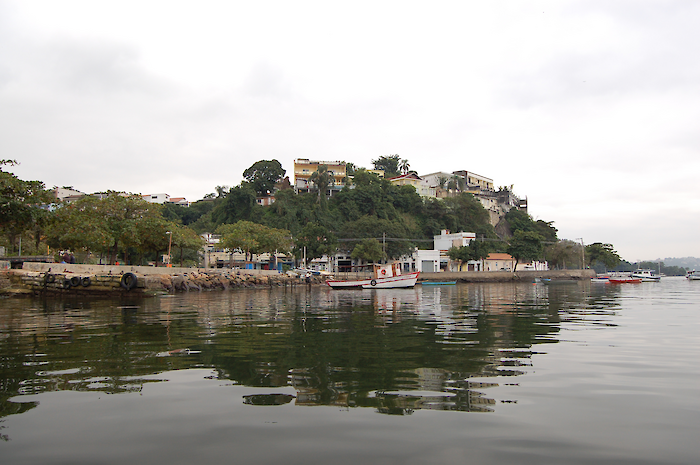
The oxygen dissolved in water is critical to the survival of fish and shellfish living in it. The majority of living creatures in the water need oxygen to survive but as dissolved oxygen levels decrease, it becomes harder for animals to get the oxygen they need to survive. Low dissolved oxygen is often the result of eutrophication, which occurs when there are too many nutrients (such as nitrogen and phosphorus) in the water which cause dense algal blooms to grow. When the algae die and decompose, the decomposition process uses up dissolved oxygen in the water, reducing the oxygen available for fish, and other organisms, which may become stressed or even die.
How is it measured?
Guanabara Bay
Dissolved oxygen was measured at approximately 20 stations between 2013-2015. The proportion of time that dissolved oxygen was below the threshold at each station was calculated and then spatially averaged into reporting regions.
Guanabara Basin
Dissolved oxygen was measured at approximately 55 stations between 2013-2015. The proportion of time that dissolved oxygen was below the threshold at each station was calculated and then spatially averaged into reporting regions.
Data is provided by INEA.
Each sample is compared to a threshold to calculate a score from 0 to 100. All sample scores are averaged for each sampling location to reach a station score. All stations in each region are averaged to a region score. All regions are averaged to the overall indicator score.
Threshold levels
The dissolved oxygen threshold for the Bay is >5 mg/l which was determined using the Class 2 Saline value from the National Council of the Environment (CONAMA).
The dissolved oxygen threshold for the Basin is >5 mg/l which was determined using the Class 2 Freshwater value from the National Council of the Environment (CONAMA).
